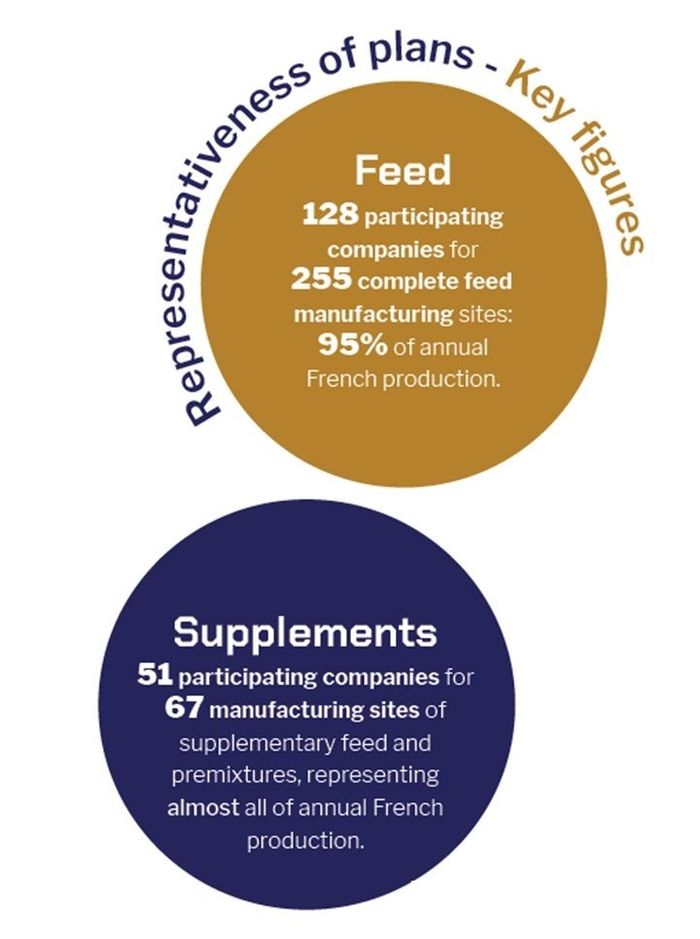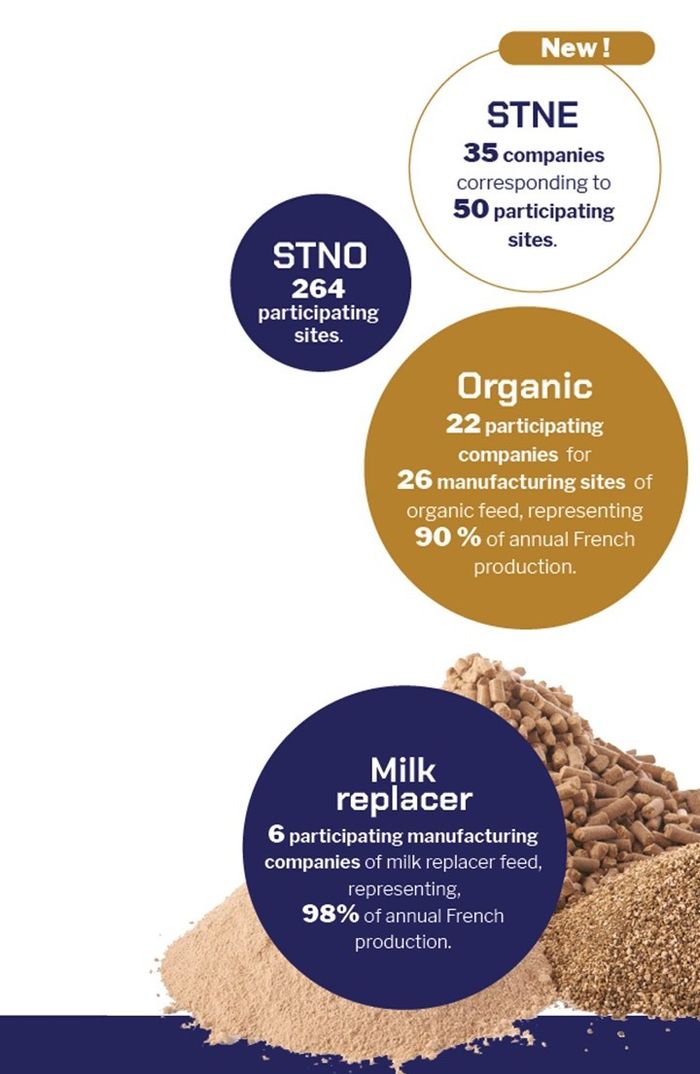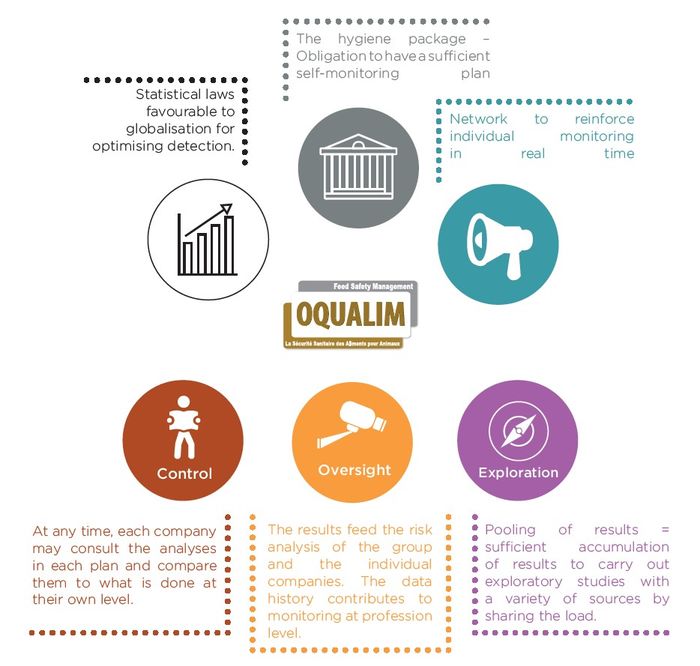Goal for pooled self-monitoring plans is to improve knowledge and monitoring on contaminants for the participants and manufacturers of feed and premixes at individual and collective levels.
This monitoring profits to the whole food chain.
Representatitivity of the plans

 2024 report on pooled self-monitoring plans
2024 report on pooled self-monitoring plans
The Hygiene packet defined by the European regulations requires manufacturers to implement a "sufficient self-monitoring plan". This may be difficult at a company level in the absence of a reference framework. The French feed manufacturers, within OQUALIM, have decided to pool information to reinforce safety of their production.
Pooled self-monitoring plans were build on the basis of the analysis of risks generic to the profession. The overall plans proposed to participants can guide them in building their own self-monitoring plan.
Pooling optimises the detection capacities as shown by Canon and Roe's statistical laws. Feed materials have been identified as the main source of contaminants. The profession has chosen to monitor feed mainly through the feed materials that constitute it. Self-monitoring carried out by manufacturers on feed materials remain second level controls. They do not substitute for the supplier's primary duty to place only products compliants for purpose on the market.
 The interest of pooling. Through its alerts, the pooled self-monitoring plan enables real time steering on site. The construction of the plan and the processing of the pooled data provide monitoring and exploration tools for the profession.
The interest of pooling. Through its alerts, the pooled self-monitoring plan enables real time steering on site. The construction of the plan and the processing of the pooled data provide monitoring and exploration tools for the profession.
The network enables the performance of monitoring at an individual level to be improved in real time. The alerts transmitted allow participants to maintain their level of vigilance and readjust
their own plans.
Since the creation of the plans, the analyses change according to knowledge, current news and manufacturer needs. The main contaminants sought are regulated contaminants, undesirable
substances and microbiological agents. The plans' focus allows for optimised monitoring of current risks at the profession level, for the benefit of increased safety for the animal production sectors.
The spread of analyses between participants with a national consolidation of results enables exploratory research and anticipation of emerging risks. This system is essential for reinforcing health security within the profession.

